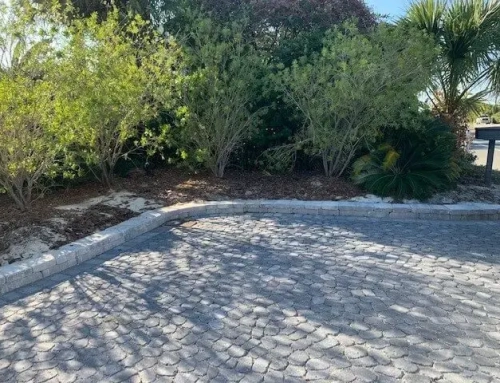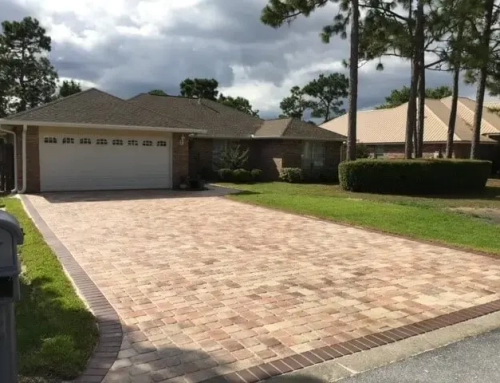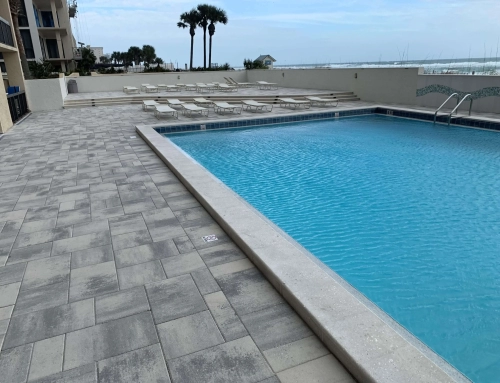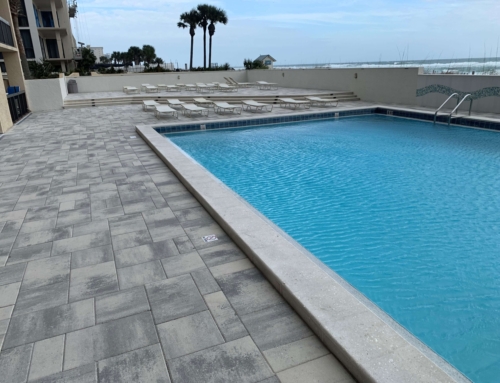Maintenance Tips for Paver Driveways
Proper maintenance is crucial to keeping your paver driveway looking its best and extending its lifespan. Fortunately, paver driveways are relatively low-maintenance compared to other materials. Here’s how to care for your paver driveway:
Routine Cleaning
Regular cleaning helps prevent dirt and debris from accumulating on your paver driveway:
- Sweeping and Washing:
- Sweep your driveway regularly to remove leaves, dirt, and other debris that can accumulate between the pavers. This simple task can help prevent stains and keep the driveway looking clean.
- For a deeper clean, wash the driveway with a garden hose or pressure washer on a low setting. Use a mild detergent for stubborn stains, such as oil or grease, and scrub the area with a soft-bristle brush.
- Removing Stains:
- Stains from oil, grease, or rust can be treated with a paver-specific cleaner. Apply the cleaner according to the manufacturer’s instructions and rinse thoroughly.
- For organic stains, such as those from leaves or berries, a mixture of water and a small amount of bleach can be effective. Test the solution on a small area first to ensure it doesn’t discolor the pavers.
Inspecting for Wear and Tear
Regularly inspecting your paver driveway allows you to catch potential issues early and address them before they worsen:
- Checking for Cracks and Shifting:
- Walk the length of your driveway periodically to check for any cracks, chips, or pavers that have shifted out of place. These issues can occur due to settling or freeze-thaw cycles.
- If you notice any pavers that are out of place, they can usually be reset by lifting them, adding or adjusting the sand underneath, and then replacing them.
- Addressing Drainage Issues:
- Proper drainage is essential for the longevity of your paver driveway. Check for areas where water may be pooling or not draining correctly. Poor drainage can lead to paver shifting or erosion of the base material.
- If drainage issues are identified, consider adjusting the slope of the driveway or adding drainage solutions, such as French drains or permeable pavers, to redirect water away from problem areas.
Sealing Your Paver Driveway
Sealing your paver driveway offers several benefits, including protecting it from stains, weathering, and UV damage:
- Benefits of Sealing:
- Sealing helps to enhance the color of the pavers, giving them a vibrant, polished appearance. It also provides a protective barrier against stains from oil, grease, or other substances that might be spilled on the driveway.
- Sealed pavers are less likely to absorb water, which can help prevent damage from freeze-thaw cycles in colder climates.
- How and When to Apply Sealer:
- It’s generally recommended to seal your paver driveway every 2-3 years, depending on the climate and wear and tear. Before sealing, ensure the driveway is thoroughly cleaned and free of debris.
- Apply the sealer using a sprayer or roller, following the manufacturer’s instructions. Be sure to cover the entire surface evenly and allow the sealer to dry completely before using the driveway.
Preventing Weed Growth
Weeds and moss can sometimes grow between the joints of pavers, detracting from the appearance and potentially compromising the structure:
- Weed Control Methods:
- To prevent weeds from taking root, use a weed inhibitor or pre-emergent herbicide designed for use on paver surfaces. These products help prevent weed seeds from germinating in the joints.
- If weeds do appear, remove them promptly by hand or use a targeted herbicide. Be cautious when using chemicals to avoid damaging the pavers.
- Using Polymeric Sand:
- Polymeric sand is a special type of joint sand that hardens when moistened, forming a strong bond between the pavers. It helps lock the pavers in place and reduces the likelihood of weeds growing in the joints.
- After installation or during maintenance, sweep additional polymeric sand into the joints and mist lightly with water to activate the bonding agents.





